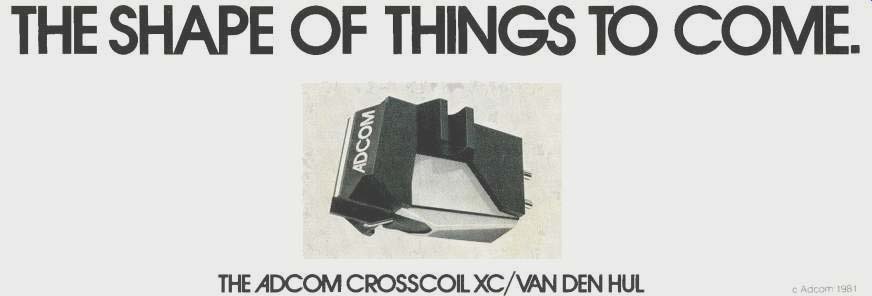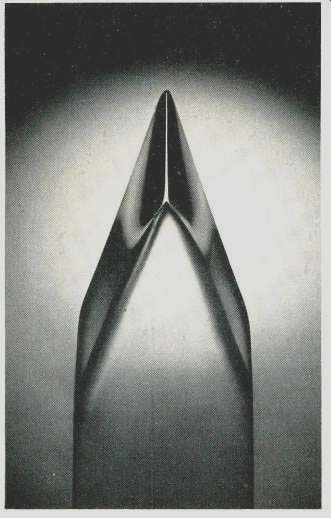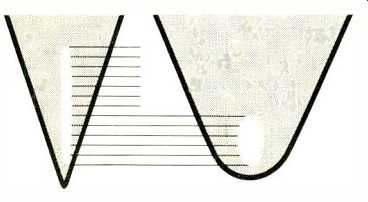THE SHAPE OF THINGS TO COME. THE ADCOM CROSSCOIL XC/VAN DEN HUL.


The Adcom Crosscoil XC. The finest high-output moving coil cartridge yet devised.
The new van den Hul stylus.
The most far reaching improvement in stylus design since the invention of the phonograph.
Now, these two signal contributions to audio technology have been combined to create the ultimate phono cartridge.
The Adcom Crosscoil XC/ van den Hul.

above: Relative groove contact area (in white ) van den Hul (L) vs. elliptical
stylus (R)
Staying on track
Anyone with even a casual knowledge of phono cartridge design recognizes that the interface between the stylus tip and the record groove is of paramount importance. For if the stylus tip is unable to accurately; race the microscopic undulations of the record groove, the result must inevitably be something less than faithful reproduction.
Obviously, the shape or contour of the stylus tip is the critical performance factor. Just how critical, may be inferred from the proliferation of stylus designs in recent years.
Ideally, the perfect stylus would have the same shape as the stylus used to cut the record master. Unfortunately, this rather obvious solution has proved to be impractical, for such a stylus tends to "recut" the groove with each play and hasten record wear.
Clearly, what is required is a modified tip shape which closely approaches that of the cutter stylus, yet avoids its potentially destructive drawbacks.
Enter the van den Hul Stylus.
Employing advanced computer optimization techniques, A.J. van den Hul, a Dutch scientist, has developed a new stylus shape that achieves this most elusive goal.
The shape of the new van den Hul stylus tip is the closest, practical approximation of the cutter yet devised. Its contact radius is only 3.5 microns (front to back), while vertical groove contact is extended to 85 microns.
As a result, the new stylus can trace frequencies as high as 85 kHz.
So, reproducing 20Hz to 20 kHz signals is no problem at all.
But extended frequency response is only the beginning.
Exhaustive testing has revealed that the new van den Hul stylus materially reduces record and tip wear.
And thanks to the extended vertical contact radius, records actually play more quietly with less groove deformation.
Tip mass is extremely low, achieved via a programmed grinding pattern that removes excess diamond from front and rear surfaces. An added benefit is the reduction of tracing distortion at all levels of groove modulation. Finally, a square diamond shank insures precise alignment of the tip in respect to the cantilever.
But in order to fully realize all of the performance benefits conferred by this truly innovative stylus, it must be coupled to a demonstrably superior cartridge capable of translating extraordinarily complex mechanical movement into a precise electrical analog.
Happily, the Adcom Crosscoil XC is just such a cartridge. Experts have been unstinting in their praise, citing the Crosscoil for its extremely flat and extended frequency response, low distortion, superb dynamic range and above all its unfailing musicality.
In combination, cartridge and stylus seem to transcend their individual capabilities. A synergism that fully justifies the expression, "the ultimate cartridge." Surely, one day someone will create a cartridge to equal it, but if you would like to experience the future now, listen to the Adcom Crosscoil XC/van den Hul. It is truly the shape of things to come.
For additional information and the name of your nearest Adcom dealer write:
Adcom, 9 Jules Lane, New Brunswick, New Jersey 08901, U.S.A.
--Adcom 1981
= = = =
Also see:
Adcom Crosscoil (ad, Feb. 1980)
Adcom components (ad, Apr. 1992)